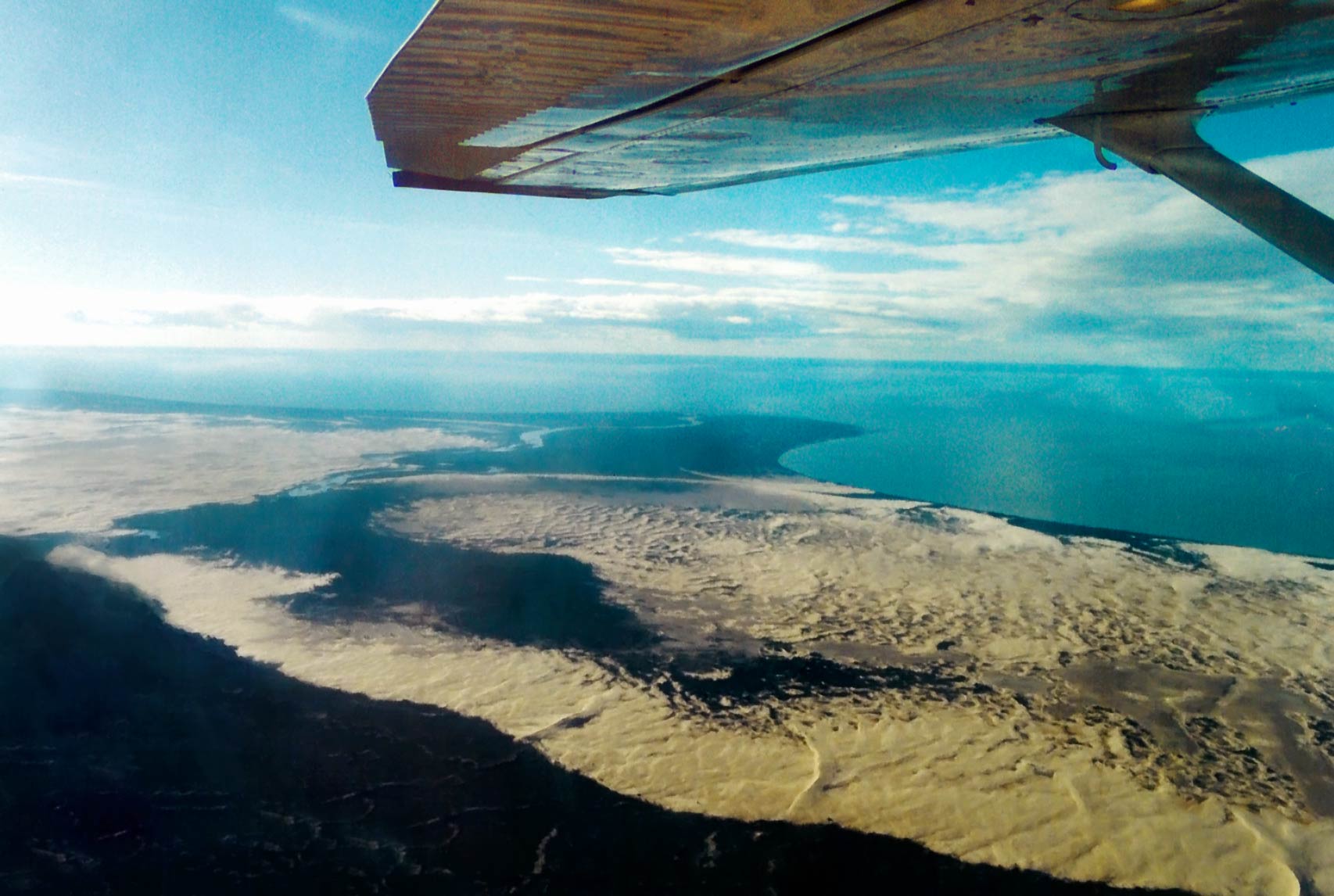|
Fishing Lake
Fishing Lake is a closed basin freshwater lake in the Canadian province of Saskatchewan. The lake is north of the town of Foam Lake, and east of the town of Wadena and is accessed from Highways 5 and 310. The northern and eastern shore is in the RM of Sasman No. 336 and the southern and western shore is in the RM of Foam Lake No. 276. The north-east portion of the lake–on the east side of McCormick Bay–is designated as Fishing Lake Wildlife Refuge. The lake does not have an effective outlet channel, and therefore is prone to flooding. Record floods in 2007 resulted in a plan by the Government of Saskatchewan to lower the level of the lake by digging a drainage channel. The Fishing Lake First Nation opposed this plan, and instead flood control berms were constructed. Communities The resort villages of Leslie Beach and Chorney Beach are located on the western and southern shores of the lake and the hamlets of North Shore Fishing Lake and Ottman-Murray Beach ar ... [...More Info...] [...Related Items...] OR: [Wikipedia] [Google] [Baidu] |
North Shore Fishing Lake
North Shore Fishing Lake is a hamlet in the Rural Municipality of Sasman No. 336, Saskatchewan, Canada. Listed as a designated place by Statistics Canada, the hamlet had a population of 50 in the Canada 2016 Census. It is located on the north-eastern shore of Fishing Lake. Demographics In the 2021 Census of Population conducted by Statistics Canada, North Shore Fishing Lake had a population of 151 living in 70 of its 210 total private dwellings, a change of from its 2016 population of 74. With a land area of , it had a population density of in 2021. See also * List of communities in Saskatchewan * Hamlets of Saskatchewan * Designated place A designated place (DPL) is a type of community or settlement identified by Statistics Canada that does not meet the criteria used to define municipalities or population centres. DPLs are delineated every 5 years for the Canadian census as the sta ... References Sasman No. 336, Saskatchewan Designated places in Saskatch ... [...More Info...] [...Related Items...] OR: [Wikipedia] [Google] [Baidu] |
Foam Lake No
Foams are materials formed by trapping pockets of gas in a liquid or solid. A bath sponge and the head on a glass of beer are examples of foams. In most foams, the volume of gas is large, with thin films of liquid or solid separating the regions of gas. Soap foams are also known as suds. Solid foams can be closed-cell or open-cell. In closed-cell foam, the gas forms discrete pockets, each completely surrounded by the solid material. In open-cell foam, gas pockets connect to each other. A bath sponge is an example of an open-cell foam: water easily flows through the entire structure, displacing the air. A sleeping mat is an example of a closed-cell foam: gas pockets are sealed from each other so the mat cannot soak up water. Foams are examples of dispersed media. In general, gas is present, so it divides into gas bubbles of different sizes (i.e., the material is polydisperse)—separated by liquid regions that may form films, thinner and thinner when the liquid phase drain ... [...More Info...] [...Related Items...] OR: [Wikipedia] [Google] [Baidu] |
Tourism In Saskatchewan
There are numerous heritages and cultural attractions in the province of Saskatchewan. Museums, dinosaur digs, aboriginal cultural and heritage sites, art galleries, professional sport venues, spas, handcraft, antique and tea shops, agricultural tours, theatre and archaeological sites comprise over 600 varied Saskatchewan institutions. There are two national parks located in the province of Saskatchewan: Grasslands National Park, Prince Albert National Park. There are also four National Historic Sites operated by Parks Canada in Saskatchewan including Fort Walsh National Historic Site, Batoche National Historic Site, Fort Battleford National Historic Site and Motherwell Homestead National Historic Site. There are 37 provincial parks, provincial recreation areas, natural areas and a Heritage rangeland are also protected on a provincial level. Saskatchewan also has two major cities, Regina and Saskatoon. Regina is home to the Royal Canadian Mounted Police (RCMP) Academy at Depo ... [...More Info...] [...Related Items...] OR: [Wikipedia] [Google] [Baidu] |
List Of Lakes Of Saskatchewan ...
This is a list of lakes of Saskatchewan, a province of Canada. The largest and most notable lakes are listed at the start, followed by an alphabetical listing of other lakes of the province. Larger lake statistics "The total area of a lake includes the area of islands. Lakes lying across provincial boundaries are listed in the province with the greater lake area." A B C D E F G H I J K L M N O P Q R S T U V W Y Z See also *List of lakes of Canada *List of rivers of Saskatchewan *Geography of Saskatchewan *List of dams and reservoirs in Canada References {{Authority control * Lakes Saskatchewan Saskatchewan ( ; ) is a Provinces and territories of Canada, province in Western Canada, western Canada, bordered on the west by Alberta, on the north by the Northwest Territories, on the east by Manitoba, to the northeast by Nunavut, and on t ... [...More Info...] [...Related Items...] OR: [Wikipedia] [Google] [Baidu] |
Walleye
The walleye (''Sander vitreus'', synonym ''Stizostedion vitreum''), also called the yellow pike or yellow pickerel, is a freshwater perciform fish native to most of Canada and to the Northern United States. It is a North American close relative of the European zander, also known as the pikeperch. The walleye is sometimes called the yellow walleye to distinguish it from the blue walleye, which is a color morph that was once found in the southern Ontario and Quebec regions, but is now presumed extinct. However, recent genetic analysis of a preserved (frozen) 'blue walleye' sample suggests that the blue and yellow walleye were simply phenotypes within the same species and do not merit separate taxonomic classification. In parts of its range in English-speaking Canada, the walleye is known as a pickerel, though the fish is not related to the true pickerels, which are members of the family ''Esocidae''. Walleyes show a fair amount of variation across watersheds. In general, fis ... [...More Info...] [...Related Items...] OR: [Wikipedia] [Google] [Baidu] |
List Of Golf Courses In Saskatchewan ...
The following is a list of golf courses in the Canadian province of Saskatchewan: 0-9 A B C D E F G H I J K L M N O P Q R S T U V W X Y Z See also *List of golf courses in Canada References {{Golf, state=collapsed golf golf Saskatchewan Saskatchewan ( ; ) is a Provinces and territories of Canada, province in Western Canada, western Canada, bordered on the west by Alberta, on the north by the Northwest Territories, on the east by Manitoba, to the northeast by Nunavut, and on t ... [...More Info...] [...Related Items...] OR: [Wikipedia] [Google] [Baidu] |
Knights Of Columbus
The Knights of Columbus (K of C) is a global Catholic fraternal service order founded by Michael J. McGivney on March 29, 1882. Membership is limited to practicing Catholic men. It is led by Patrick E. Kelly, the order's 14th Supreme Knight. The organization was founded in March 1882 as a mutual benefit society for working-class and immigrant Catholics in the United States. In addition to providing an insurance system for its members, its charter states that it endeavors "to promote such social and intellectual intercourse among its members as shall be desirable and proper". It has grown to support refugee relief, Catholic education, local parishes and dioceses, and global Catholic social and political causes. The Knights promote the Catholic view on public policy issues, including opposition to same-sex marriage and abortion. The organization also provides certain financial services to the individual and institutional Catholic market. Its wholly owned insurance company, o ... [...More Info...] [...Related Items...] OR: [Wikipedia] [Google] [Baidu] |
Miniature Golf
Miniature golf, also known as minigolf, mini-putt, crazy golf, or putt-putt, is an offshoot of the sport of golf focusing solely on the putting aspect of its parent game. The aim of the game is to score the lowest number of points. It is played on courses consisting of a series of holes (usually a multiple of 9) similar to its parent, but characterized by their short length (usually within 10 yards from tee to cup). The game uses artificial putting surfaces (such as carpet, artificial turf, or concrete), a geometric layout often requiring non-traditional putting lines such as bank shots, and artificial obstacles such as tunnels, tubes, ramps, moving obstacles such as windmills, and walls of concrete, metal, or fiberglass. When miniature golf retains many of these characteristics but without the use of any props or obstacles, it is purely a mini version of its parent game. Nomenclature While the international sports organization World Minigolf Sport Federation (WMF) prefers to ... [...More Info...] [...Related Items...] OR: [Wikipedia] [Google] [Baidu] |
Northern Pike
The northern pike (''Esox lucius'') is a species of carnivorous fish of the genus '' Esox'' (the pikes). They are typical of brackish and fresh waters of the Northern Hemisphere (''i.e.'' holarctic in distribution). They are known simply as a pike in Britain, Ireland, and most of Eastern Europe, Canada and the United States. Pike can grow to a relatively large size: the average length is about , with maximum recorded lengths of up to and published weights of . The IGFA currently recognizes a pike caught by Lothar Louis on Greffern Lake, Germany, on 16 October 1986, as the all-tackle world-record northern pike. Northern pike grow to larger sizes in Eurasia than in North America, and typically grow to larger sizes in coastal than inland regions of Eurasia. Etymology The northern pike gets its common name from its resemblance to the pole-weapon known as the pike (from the Middle English for 'pointed'). Various other unofficial trivial names are common pike, Lakes pike, great n ... [...More Info...] [...Related Items...] OR: [Wikipedia] [Google] [Baidu] |
List Of Protected Areas Of Saskatchewan
This is a list of protected areas of Saskatchewan. National parks Provincial parks The Government of Canada, federal government transferred control of natural resources to the Western Canada, western provinces in 1930 with the Natural Resources Acts. At that time, the Saskatchewan government set up its own Department of Natural Resources. In an attempt to get people working and to encourage tourism during the Great Depression, several projects were set up by the government, including setting up a provincial park system in 1931. The founding parks include Cypress Hills, Duck Mountain, Good Spirit Lake, Moose Mountain, Katepwa Point, and Little Manitou Lake#Manitou and District Regional Park, Little Manitou. Greenwater Lake was added in 1932. Two more parks were added by the end of the 1930s and Little Manitou ceased to be a provincial park in 1956 and in 1962, it became a regional park. The list of parks, and their types, come from The Parks Act. Regional park ... [...More Info...] [...Related Items...] OR: [Wikipedia] [Google] [Baidu] |
Fishing Lake 89
Fishing Lake 89 is an Indian reserve of the Fishing Lake First Nation in Saskatchewan. It is 119 kilometres north of Fort Qu'Appelle. In the 2016 Canadian Census The 2016 Canadian census was an enumeration of Canadian residents, which counted a population of 35,151,728, a change from its 2011 population of 33,476,688. The census, conducted by Statistics Canada, was Canada's seventh quinquennial census. ..., it recorded a population of 406 living in 128 of its 161 total private dwellings. In the same year, its Community Well-Being index was calculated at 54 of 100, compared to 58.4 for the average First Nations community and 77.5 for the average non-Indigenous community. References Indian reserves in Saskatchewan Division No. 10, Saskatchewan Fishing Lake First Nation {{Saskatchewan-IndianReserve-stub ... [...More Info...] [...Related Items...] OR: [Wikipedia] [Google] [Baidu] |







